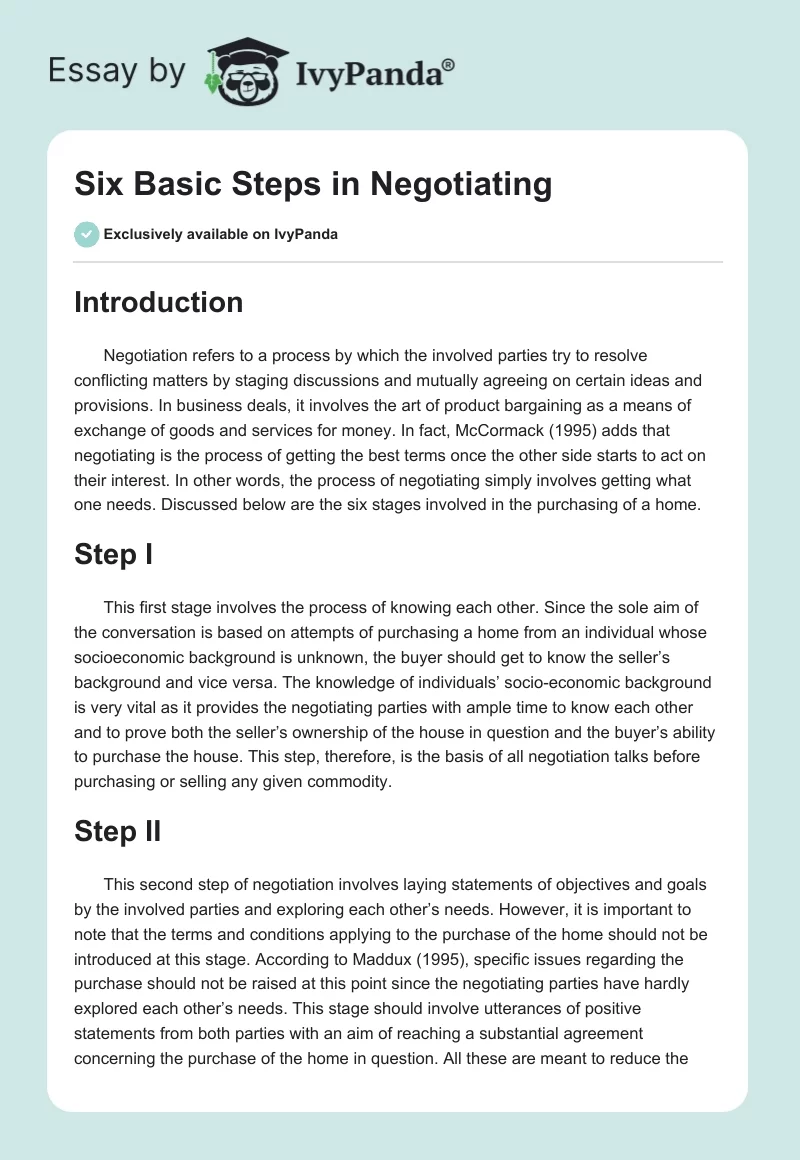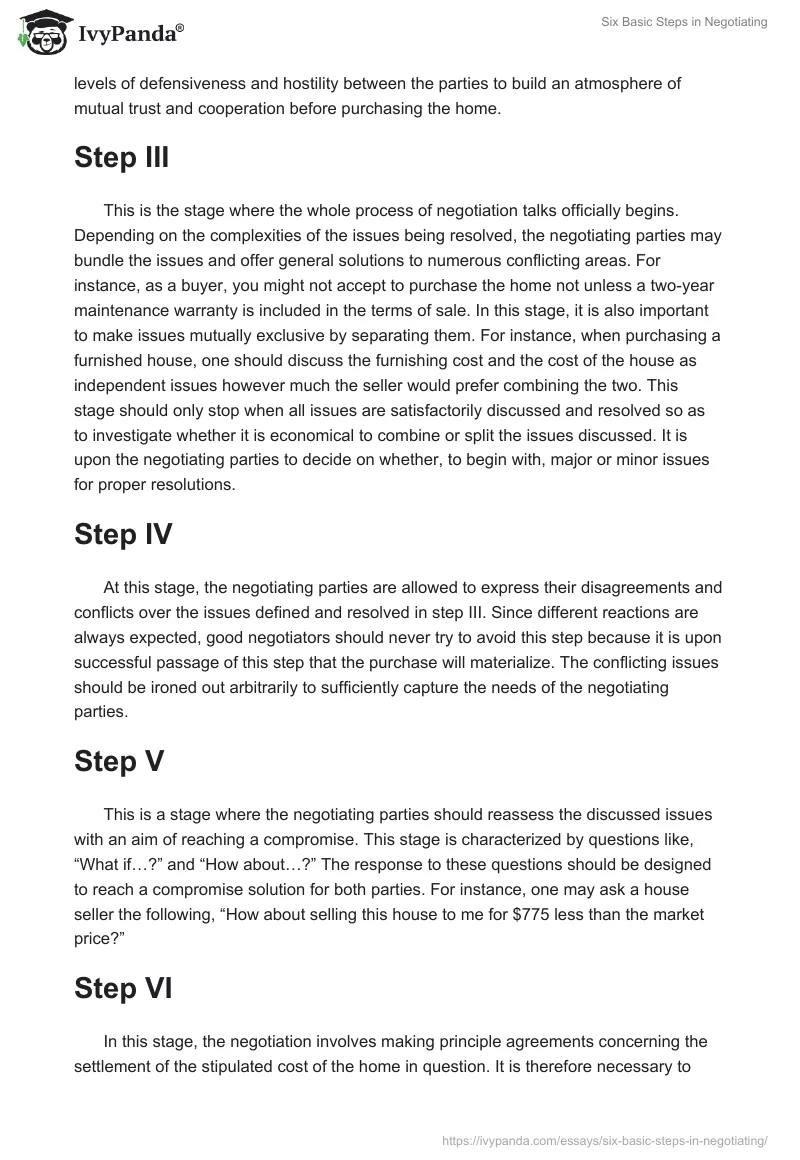Introduction
Negotiation refers to a process by which the involved parties try to resolve conflicting matters by staging discussions and mutually agreeing on certain ideas and provisions. In business deals, it involves the art of product bargaining as a means of exchange of goods and services for money. In fact, McCormack (1995) adds that negotiating is the process of getting the best terms once the other side starts to act on their interest. In other words, the process of negotiating simply involves getting what one needs. Discussed below are the six stages involved in the purchasing of a home.
Step I
This first stage involves the process of knowing each other. Since the sole aim of the conversation is based on attempts of purchasing a home from an individual whose socioeconomic background is unknown, the buyer should get to know the seller’s background and vice versa. The knowledge of individuals’ socio-economic background is very vital as it provides the negotiating parties with ample time to know each other and to prove both the seller’s ownership of the house in question and the buyer’s ability to purchase the house. This step, therefore, is the basis of all negotiation talks before purchasing or selling any given commodity.
Step II
This second step of negotiation involves laying statements of objectives and goals by the involved parties and exploring each other’s needs. However, it is important to note that the terms and conditions applying to the purchase of the home should not be introduced at this stage. According to Maddux (1995), specific issues regarding the purchase should not be raised at this point since the negotiating parties have hardly explored each other’s needs. This stage should involve utterances of positive statements from both parties with an aim of reaching a substantial agreement concerning the purchase of the home in question. All these are meant to reduce the levels of defensiveness and hostility between the parties to build an atmosphere of mutual trust and cooperation before purchasing the home.
Step III
This is the stage where the whole process of negotiation talks officially begins. Depending on the complexities of the issues being resolved, the negotiating parties may bundle the issues and offer general solutions to numerous conflicting areas. For instance, as a buyer, you might not accept to purchase the home not unless a two-year maintenance warranty is included in the terms of sale. In this stage, it is also important to make issues mutually exclusive by separating them. For instance, when purchasing a furnished house, one should discuss the furnishing cost and the cost of the house as independent issues however much the seller would prefer combining the two. This stage should only stop when all issues are satisfactorily discussed and resolved so as to investigate whether it is economical to combine or split the issues discussed. It is upon the negotiating parties to decide on whether, to begin with, major or minor issues for proper resolutions.
Step IV
At this stage, the negotiating parties are allowed to express their disagreements and conflicts over the issues defined and resolved in step III. Since different reactions are always expected, good negotiators should never try to avoid this step because it is upon successful passage of this step that the purchase will materialize. The conflicting issues should be ironed out arbitrarily to sufficiently capture the needs of the negotiating parties.
Step V
This is a stage where the negotiating parties should reassess the discussed issues with an aim of reaching a compromise. This stage is characterized by questions like, “What if…?” and “How about…?” The response to these questions should be designed to reach a compromise solution for both parties. For instance, one may ask a house seller the following, “How about selling this house to me for $775 less than the market price?”
Step VI
In this stage, the negotiation involves making principle agreements concerning the settlement of the stipulated cost of the home in question. It is therefore necessary to agree on the final terms and conditions of the purchase process. This should be done using known language to both parties, to lessen the risks of misunderstanding amongst the involved parties. Tentative agreements should be avoided at all costs since the key aim of any negotiation is to reach a final agreement. Once the purchaser and the seller of the home have reached a final agreement, then it is safe to continue and purchase the home (Fisher & Ury, 1981).
References
Fisher, R., & Ury, W. (1981). Getting to Yes: Negotiating Agreement Without Giving In. New York, USA: Penguin Books.
Maddux, B.R. (1995). Successful Negotiation: Effective “Win-Win” Strategies and Tactics. Hamilton Court Menlo Park, CA: Crisp Learning.
McCormack, H.M. (1995). Mark H. McCormack on Negotiating. Beverly Hills, CA: Dave Books.


